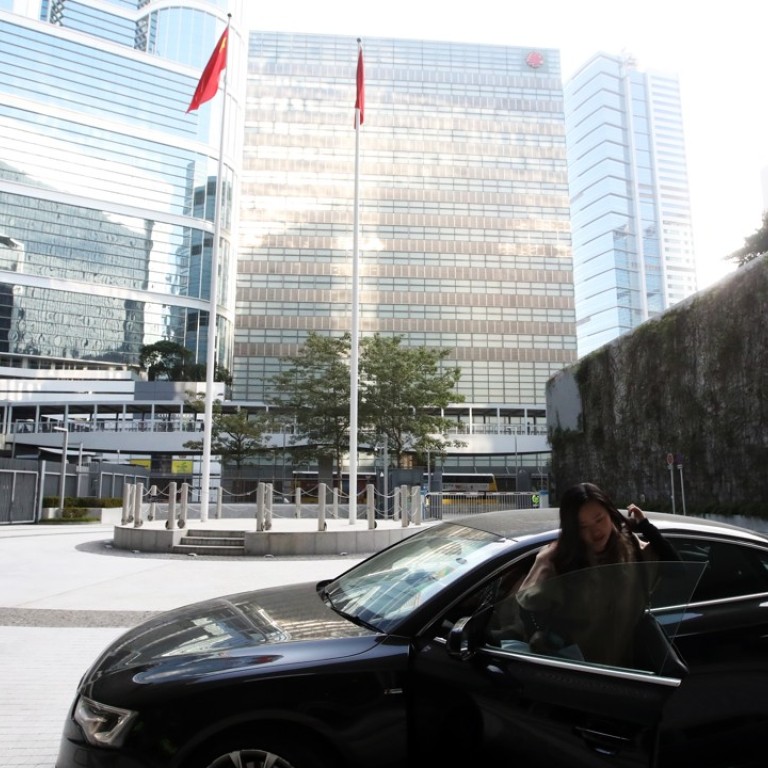
Hong Kong’s No 2 official defends decision to limit access to ‘Civic Square’ where protests are allowed only on specific days
Chief Secretary Matthew Cheung cites need to keep order, but 10 opposition party members later stage protest at site outside government headquarters
Hong Kong’s No 2 official on Thursday defended the government’s decision to restrict demonstrations at a popular protest site outside its headquarters, even as it reopened the area known as “Civic Square” to the public after a three-year closure.
But Chief Secretary Matthew Cheung Kin-chung’s words went unheeded, as about 10 opposition members from the Labour Party marched into the Admiralty site at noon on Thursday. They ignored the announcement that permits to hold demonstrations there would only be granted for Sundays or public holidays.
Access to the area, officially known as the East Wing Forecourt, was tightened in July 2014 when a three-metre-high fence was erected. It was prompted by an incident a month earlier, where dozens of people stormed the neighbouring Legislative Council complex to protest the government’s development plan for the northeastern New Territories.
‘Civic Square’ to reopen to public in Hong Kong – but with restricted access for demonstrations
Thursday was the first day where civil servants and visitors to the government offices were able to walk through or be dropped off in the area daily between 6am and 11pm.
Cheung, who met members of the media in the forecourt on Thursday morning, said rallies were only allowed during specific periods for the sake of keeping order.
Flanked by the government’s director of administration, Kitty Choi Kit-yu, Cheung said: “There are some 3,000 colleagues working here, with hundreds of visitors and cars coming every day.
“It is very difficult if you say [the area] should be opened for demonstrations or rallies at any time of the day.”
Popular protest spot Civic Square closed for security works, public access limited
Cheung said the reopening of the forecourt showed the government’s “openness and inclusiveness”, and it would try to hear as many public views as possible.
In the afternoon, Lam went to the forecourt to film a video that she said would be released on her Facebook page later. Speaking into the camera, she said the reopening of the forecourt had restored the area’s original function as a point of access to the surrounding buildings.
Possible improvements to the space included adding greenery and putting up art works, she said.
But activists and pan-democrats, who had disputed the decision to restrict access to “Civic Square” in 2014, were hardly impressed.
“As this is the government’s headquarters, policymakers should [be open] to listening to people expressing public opinions here, instead of rejecting them by pushing them outside,” Labour Party chairman Steven Kwok Wing-kin said.

Kwok and his party colleagues were initially blocked by security guards on Thursday but they were ultimately successful in staging a 20-minute protest in the forecourt, where they called for a “genuine opening” with no limitation on demonstrations.
Since the government headquarters in Tamar opened in 2011, “Civic Square” has been the site of high-profile sit-ins, including rallies against the implementation of Beijing-backed national education policies in 2012.


